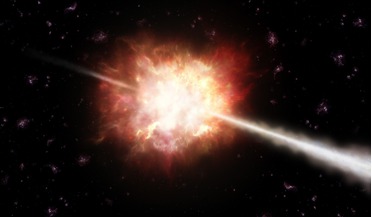 19 April 2016
Gravitational waves poised to be pinpointed by gamma ray burst
19 April 2016
Gravitational waves poised to be pinpointed by gamma ray burst
... light originating from the same part of the sky. Black holes are expected to merge without significant X-ray or gamma-ray emission because gas orbiting the system is needed to generate the light and it is thought that any available...
 25 November 2016
New search shows no link between gravitational waves and gamma-ray bursts
25 November 2016
New search shows no link between gravitational waves and gamma-ray bursts
... dozens of institutions and 16 countries worldwide with the aim of developing the emerging field of gravitational wave science. Gamma ray bursts (GRBs), which come in two flavours – long and short – are, as the name suggests, transient flashes...
 11 July 2016
Short gamma-ray burst is from a binary neutron star coalescing into a black hole say researchers
11 July 2016
Short gamma-ray burst is from a binary neutron star coalescing into a black hole say researchers
...the two events are actually linked. Short gamma-ray bursts (sGRBs) are a class of gamma-ray bursts (GRB) with a duration of ...black hole identified by Enderli and team is linked to a gamma-ray burst first found by the Fermi/GBM instrument in 2009, ...
 24 January 2018
Scientists uncover common origin for ultrahigh-energy particles
24 January 2018
Scientists uncover common origin for ultrahigh-energy particles
... physically connected to each other by the same class of astrophysical sources, other mechanisms of high-energy neutrino and gamma-ray production still need to be investigated to rule out (or confirm) their origin. Just how robust this model actually...
 03 May 2017
Milky Way dark matter still as elusive as ever
03 May 2017
Milky Way dark matter still as elusive as ever
...these processes would produce gamma rays when it occurred. And with more gamma rays coming from the galactic... spinning cores of collapsed stars that emit light predominantly in gamma-rays and radio waves. "Considering that about 70 percent of all...
..., Maryland. “One way or another, all of the gamma-ray constellations have a tie-in to Fermi science.” Among the ... the new constellations are from gamma-ray sources, such as supermassive black holes, gamma-ray bursts and the debris of supernova...